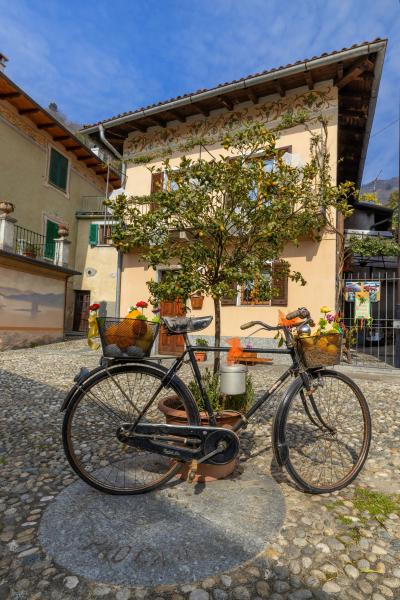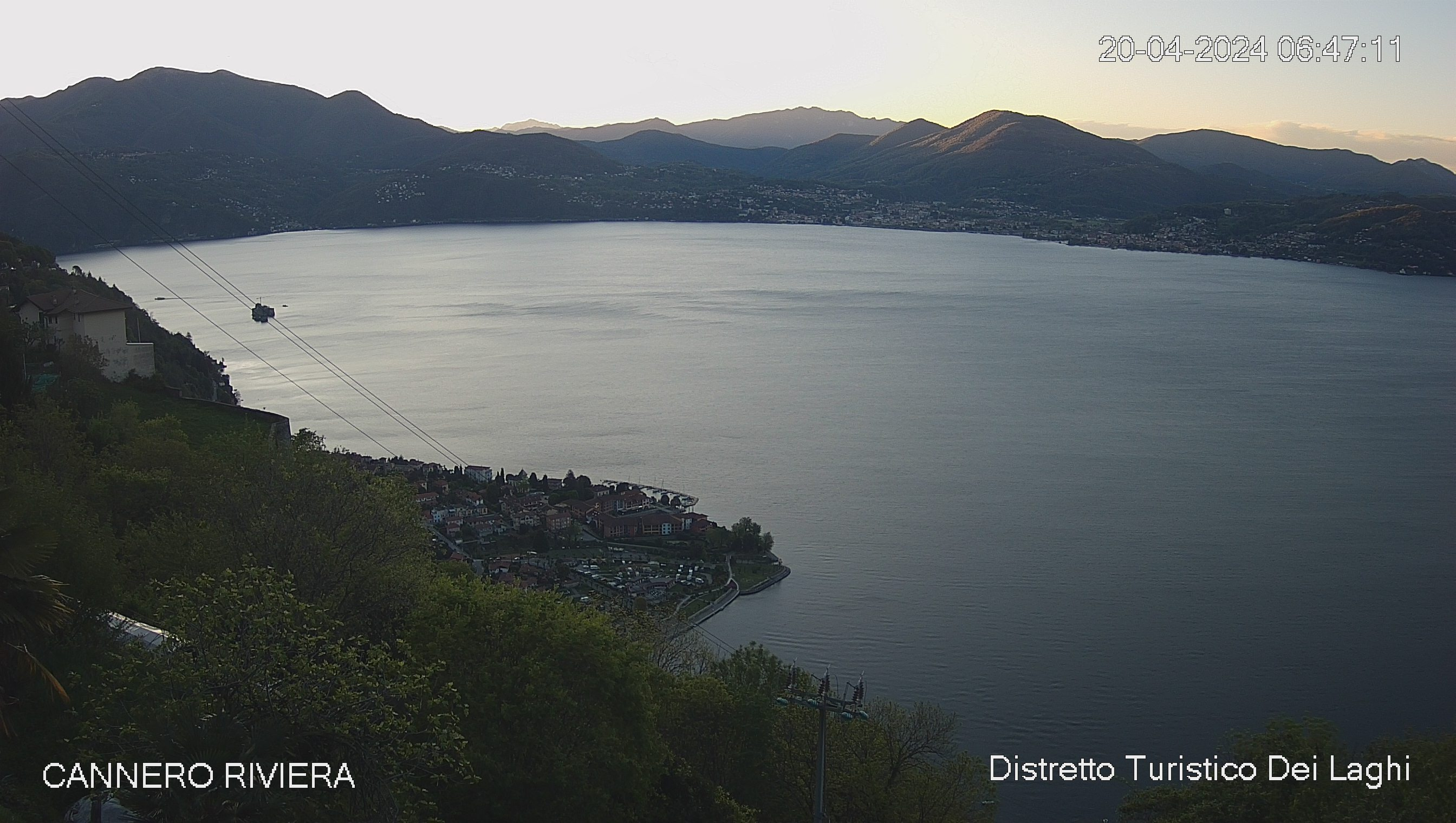Cannero Riviera - Small town of excellence
Recognitions
Italian Touring Club Orange Flag
Blue Flag
Altitude
225 a.s.l.
Patron Saint
Second Monday in July, Madonna del Carmine
Market Day
Friday
Tourist Information
www.cannero.it
THE VILLAGE: CHEST OF CULTURE, TRADITIONS AND NATURE
Cannero Riviera is a village situated between mountains and lake, built on the delta of the Rio Cannero.
The location is defined as a "transition" area within the Ticino and Lake Maggiore Protected Areas included in the MAB (Man and the Biosphere), an intergovernmental scientific programme launched by UNESCO. It is also located behind the Val Grande National Park. Characteristic of the area are two small islands overlooked by striking 16th century castles, better known as the "Castles of Cannero". Among the main places of interest is the Citrus Park, with 25 different species of citrus fruits, an explosion of colours and scents typical of the Riviera. The park is open all year round with free admission. During the summer season weekly visits are organised. Located in a natural inlet, the "Blue Flag" beach is a wide sandy beach, equipped and accessible to all. The "Lungolago delle magnolie" is an enchanting lakeside promenade, built in the second half of the 19th century, with a succession of old villas and historic hotels that also surround the old harbour, one of the most picturesque on the lake. The next stop is the Church of San Rocco, the date of construction of which is unclear, although it was first described in 1567. Villa Laura is a stately building from the early 20th century, owned by the municipality. On the first floor is the Ethnographic and Brush Museum, founded in 1981 thanks to an idea of pupils and teachers from the local secondary school. Also not to be missed is the washhouse, built towards the end of the 19th century and fed by a hot spring in winter and a cool spring in summer: dedicated to public use, it served the upper part of the village. Also worth mentioning is the Votive Chapel, built in the 19th century and dedicated to Our Lady of the Crucifix. Recent work by local restorer Katia Zanetti has brought to light the frescoed parts that had been damaged by time, restoring the Chapel’s historical and artistic dignity. To the side runs the "rongia", a diversion of the Rio Cannero with its suggestive water features as it enters the village. In Togliano, behind the Town Hall, we find the "piazzetta degli affreschi" (small square with frescoes) created by the local painter Enzo Tipaldi. Four major historical scenes are represented: the enfranchisement of the serfs of Oggiogno (1212), the construction of the Castles of Cannero (1403), the sacking of Cannero by the Sforza family (1524) and the flood that caused the parish church to collapse (1829). Rebuilt in 1836, the Church of San Giorgio Martire is internally decorated with frescoes by the painter Mazzucchi; also noteworthy are the altar of the Madonna del Carmelo and the chapel of the same name, which houses the body of San Fausto Martire, whose relics were already present in the old church. Lastly, the Cannero grotto, a faithful copy of the Lourdes Grotto, is not to be missed: built in 1939 at the behest of parish priest Don Luigi Borlandelli, it is a constant source of popular devotion and is the scene of frequent religious ceremonies, particularly on 11 February, the anniversary of the first apparition of the Madonna in Lourdes. For some relaxation, we recommend a stroll around the new marina.
A word of advice: spring in Cannero Riviera is not to be missed, with the traditional Camellia Exhibition and the historic "Gli Agrumi di Cannero Riviera" event in March.
Typical food and wine
On Lakes Maggiore and Orta, the protagonist is freshwater fish. Trout, perch and whitefish, pike, char, gardon and arborella. In addition, honeys of different varieties are produced. Notable is the production of citrus fruits: in particular lemons, but also oranges, citrons and grapefruits. Cakes, biscuits, tea, liqueurs and jams are made from these fruits.
Hospitality
www.distrettolaghi.it/ospitalita
Trekking Routes
Recommended Slow Trek: “Lake Maggiore: Monte Morissolo-Line Cadorna” e “Lago Maggiore: Via delle Genti from Cannobio to Cannero Riviera”
Bike Routes
Recommended bike routes: “Slow Panorama: on the Cadorna Line in Verbano”
Accessibility
Recommended "For all" route (in Cannobio, nearby): Cannobio and Cannero
Handicrafts
The production of flowers typical of Lake Maggiore, with particular reference to the Alto Vergante hills above Arona, concerns the excellent cultivation of azaleas, rhododendrons and camellias. It is characterised by the high quality standard of its flower production and represents the conscious evolution of a tradition from a spontaneous vocation to a highly specialised activity, making the western part of the lake a true flower-growing district.
Archivio Fotografico Distretto Turistico dei Laghi
Foto di Marco Benedetto Cerini












